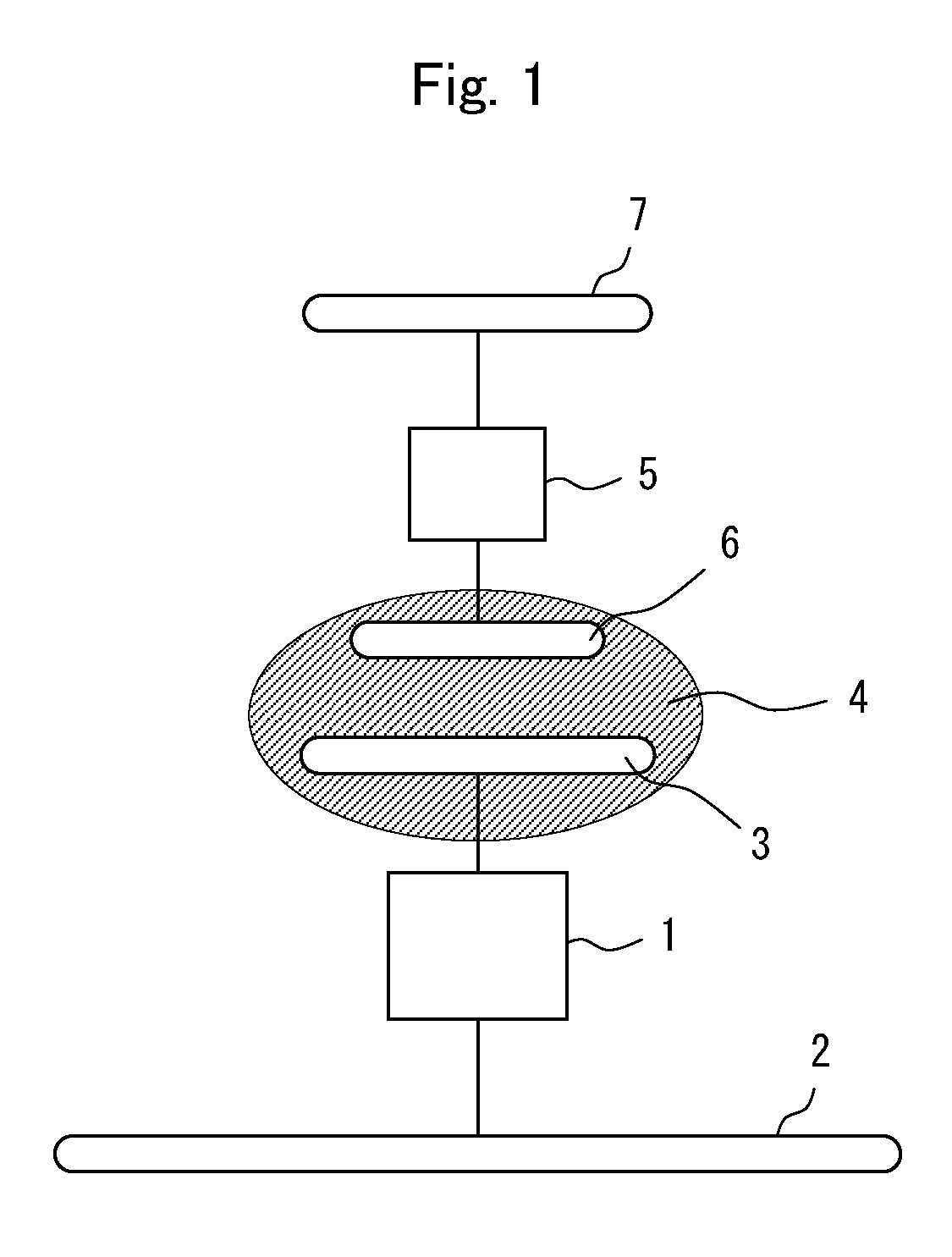Power Transmitting Device, Power Receiving Device, and Power Transmission System
a technology of power transmission device and receiving device, which is applied in the direction of electromagnetic wave system, transformer, inductance, etc., can solve the problems of large amount of leakage magnetic flux, difficult to reduce its height, and high probability of undesirable coupling between the wire-wound transformer and other circuits, so as to reduce the size of the transmission device and prevent the leakage of magnetic flux. , the effect of increasing the transmission efficiency
- Summary
- Abstract
- Description
- Claims
- Application Information
AI Technical Summary
Benefits of technology
Problems solved by technology
Method used
Image
Examples
first embodiment
[0028]A power transmitting device according to a first embodiment will be described with reference to FIGS. 2A to 2C and FIG. 3.
[0029]FIG. 2A is a circuit diagram of a uncoupled power transmitting device 101 according to the first embodiment. The power transmitting device 101 includes a high-frequency voltage generator 11, and a piezoelectric resonator 21. The equivalent capacitor C1 represents the capacitance obtained between the two generating electrodes when no receiving device is present. The piezoelectric resonator 21 and the capacitor C1 are connected in series to the high-frequency voltage generator 11.
[0030]FIG. 2B is an equivalent circuit of the piezoelectric resonator 21. FIG. 3 is a graph illustrating the frequency characteristics of the impedance and phase of the piezoelectric resonator 21. In FIG. 3, a logarithmic scale is used for the impedance axis (vertical axis), and a linear scale is used for the frequency axis (horizontal axis). The piezoelectric resonator 21 is r...
second embodiment
[0034]FIG. 4A is a circuit diagram of an uncoupled power receiving device 201 according to a second embodiment. The power receiving device 201 includes a piezoelectric resonator 22, and a load RL. The equivalent capacitor C2 represents the capacitance obtained between the two electromotive electrodes when no power transmitting device is present. The piezoelectric resonator 22 and the load RL is connected in series to the capacitor C2.
[0035]FIG. 4B is an equivalent circuit of the piezoelectric resonator 22. As illustrated in FIG. 4B, the piezoelectric resonator 22 is represented by a parallel circuit formed of a capacitor Co and a series circuit formed of an inductor L2 and a capacitor C21. This equivalent circuit is similar to the one illustrated in FIG. 2B in the first embodiment, and has frequency characteristics similar to those illustrated in FIG. 3.
[0036]FIG. 4C is an equivalent circuit of the power receiving device 201 according to the second embodiment for the case where the ...
third embodiment
[0038]All the electrodes are interacting through a dielectric medium (including air and vacuum). The quasi static-situation (negligible far field radiation) in case of four electrodes (one generator, one load), is fully described by a 4×4 matrix involving 10 different capacitive coefficients. In case of a two port representation of the system, the power transfer is fully described in the classical circuit frame by two coupled equivalent capacitors C1 and C2 and a mutual capacitance CM or equivalently a coupling factor k. These values can be derived from the 10 independent general coefficients of the original matrix and will be referred in the following as the two-port three-coefficient coupling model.
[0039]In some practical situations the behavior is dominated by some specific coefficients among the many involved, for instance the coupling coefficients between on one hand the active electrodes and on the other hand the passive ones.
[0040]FIG. 5 is a circuit diagram of a power transm...
PUM
 Login to View More
Login to View More Abstract
Description
Claims
Application Information
 Login to View More
Login to View More - R&D
- Intellectual Property
- Life Sciences
- Materials
- Tech Scout
- Unparalleled Data Quality
- Higher Quality Content
- 60% Fewer Hallucinations
Browse by: Latest US Patents, China's latest patents, Technical Efficacy Thesaurus, Application Domain, Technology Topic, Popular Technical Reports.
© 2025 PatSnap. All rights reserved.Legal|Privacy policy|Modern Slavery Act Transparency Statement|Sitemap|About US| Contact US: help@patsnap.com



